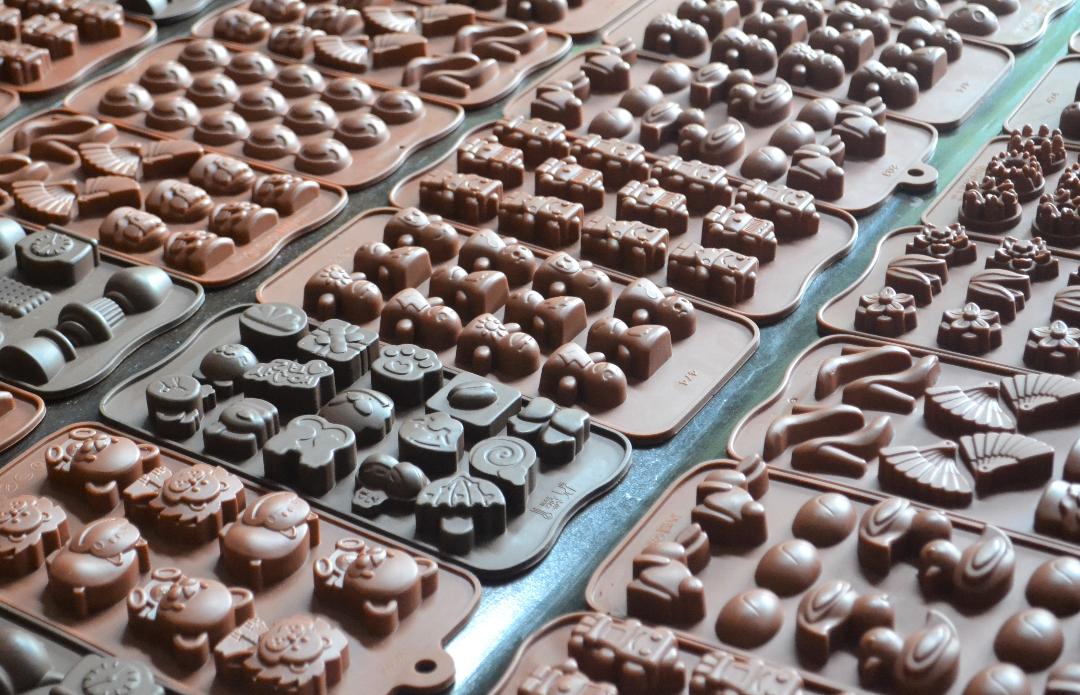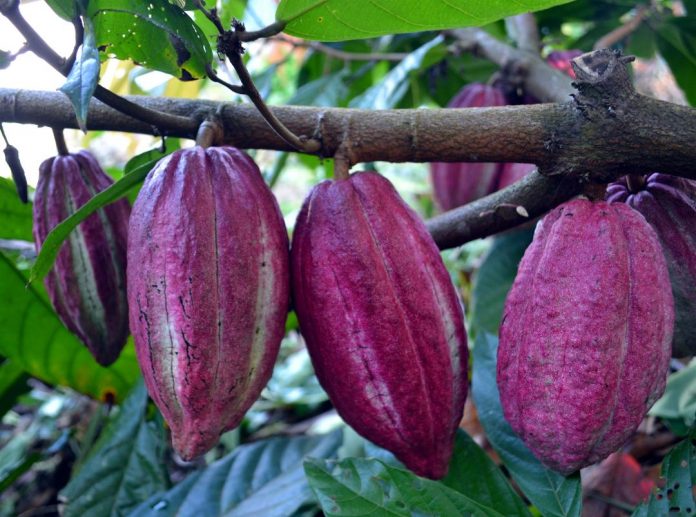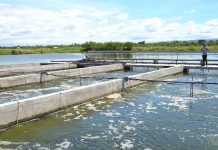\“Life is like a box of chocolates. You never know what you’re gonna get.” When Tom Hanks delivered those lines in the Oscar winning Forrest Gump, most of the chocolate aficionados readily agreed.
Chocolates come from cacao trees. They have been cultivated for at least three millennia in Central America and Mexico. Although Christopher Columbus came to know the beans, it was Hernando Cortes who brought it to Spain.
In the Philippines, cacao has been cultivated since the 17th century when Spanish mariner Pedro Bravo de Lagunas planted the crop in San Jose, Batangas. Since then, cacao growing flourished in different parts of the country.
In the 1950s, commercial cacao farms were established and cocoa beans production expanded into an industry in the following decade as processing facilities were put up by a group of Filipino investors. The industry started to take-off in the mid-1980s as more investments were poured on commercial farms and on grinding facilities.
However, the growth of the industry ceased when the Comprehensive Agrarian Reform Program (CARP) took effect in 1988, which resulted in the breakdown and redistribution of the commercial farms into small farm units. In addition, the outbreak of the cocoa pod borer pest was unchecked causing some plantations to be wiped out and abandoned.
These factors resulted in the degradation of the cacao regions and a serious decline in the cacao industry.
But in recent years, cacao growing is making a comeback. This is due to the intense demand for chocolates around the world. In fact, chocolate consumption worldwide has been growing at 3% percent annually, recent studies have shown.
“Though the majority of cacao is consumed in North America and Europe, demand is growing more rapidly in Asia where strong economic growth, particularly in India and China, is resulting in more people being able to afford luxury foodstuffs such as chocolate,” said a position paper written by Adam Keatts and Christopher Root.
Global consumption of chocolate has been rising with new market demand growing steadily in countries like Central Asia and Eastern Europe, India and various states of the Russian Federation. In addition, there is a ready market waiting to be tapped in Singapore, Malaysia, Japan and China. There is also a big local demand for cacao beans in the country.
Curiously enough, the Philippines is located in what experts called “Cocoa belt.” A band between 10 to 20 degrees north and south of the equator, it is the ideal location where cacao grows best. This band covers Central and South America, West Africa, and Southeast Asia.
“Our country lands in this band, together with our neighbor, Indonesia,” says the Philippine Cacao Industry Roadmap.
Most of the cacao trees are grown mostly in Mindanao as it has two advantages: good rainfall and good soil. “But cacao would grow anywhere in the country,” says Jethro P. Adang, the director of Mindanao Baptist Rural Life Center (MBRLC) Foundation, Inc. He adds that other areas where cacao is suited for planting are Quezon, Camarines Sur, Camarines Norte, and Palawan.
Ninety percent of the total cacao production in the country is mostly sourced from Mindanao, according to the data from the Department of Agriculture’s High Value Commercial Crops Development Program. The Davao Region contributes about 80% of the total production.
Cacao is highly prized because of its beans. Because of their intense bitter taste, they have to be fermented to develop the flavor. After fermentation, the beans are dried, cleaned, and roasted, and the shell is removed to produce cacao nibs. The nibs are then ground and liquefied, resulting in pure chocolate in fluid form: chocolate liquor. The liquor can be further processed into two components: cocoa solids and cocoa butter.
Pure, unsweetened chocolate contains primarily cocoa solids and cocoa butter in varying proportions. Much of the chocolate consumed today is in the form of sweet chocolate, combining chocolate with sugar. Milk chocolate is sweet chocolate that additionally contains milk powder or condensed milk.
Chocolate has recently been included in the A-list of antioxidants – up there with soybeans and green tea. Antioxidants, or flavanols, help protect the body from damage caused by pollution, pesticides, smoking, and processed foods.
“Chocolate and health do not seem to fit together but it is a very interesting proposition: if I can eat something I like and it is good for me, that is great,” said Hans Vriens, chief innovation officer of Barry Callebaut, which conducted a study. “Chocolate is probably at the bottom of the list when you think about making food healthier.”
Cacao was first cultivated by the Mayas around the 7th century A.D. They carried the seed north from the tropical Amazon forests to what is now Mexico. In the 16th century, the Spanish planted cacao across South America, into Central America, and onto the Caribbean Islands. In the 17th century, the Dutch transported the cacao to other places around the globe like Java, Sumatra, Sri Lanka, New Guinea, and the Philippines.
Studies have shown that cacao contains 0.5% to 2.7% theobromine, 0.25% caffeine, and other methylxanthine alkaloids. Cocoa contains the antioxidant catechin. Theobromine has weaker stimulant effects than caffeine but is a more potent diuretic, cardiovascular stimulant, and coronary dilator.
There are three types of cacaos: Criollo, Forastero, and Trinitario.
The Spaniards brought Criollo to the Philippines in the 18th century. It is very susceptible to most pests and diseases of cacao. However, it is the most sought-after and expensive variety of cacao because of its quality and rarity. The variety, which can be found only in Ecuador and the Philippines, is also known as “porcelana cacao” because of its seed’s white color. When provided the proper attention and care, it can yield an average of 1.5 to two kilograms per tree under Davao condition.
Forastero was introduced to the country in the early 1990s by the Americans. This variety is known for its sturdiness and wide adaptation. It shows varying degrees of reactions to the pests and diseases of cacao, ranging from highly susceptible to resistant.
Trinitario reportedly comes from Trinidad, credited for hybridization between Criollo and Forastero plants. Many Trinitario selections produce high quality beans (from the Criollo parents) and possess the resistance and vigor of the Forastero parent.
For those who want to plant cacao in their farms, here are some tips from The Philippines Recommends for Cacao, published by the Philippine Council for Agriculture, Aquatic and Natural Resources Research and Development (PCAARRD):
• The use of seeds is the best method of planting cacao. Seeds must be selected carefully and must come from big pods obtained from trees which are highly productive, regular bearers and free from pests. Seeds must be planted immediately since their viability is limited.
• Seedlings to be retained in the nursery for 3-4 months must be raised in polyethylene bags. The seedlings are shaded both above and at the sides for protection against strong winds. Coconut palm fronds can be used for this purpose.
• Transplanting can be done when the shoots become mature and the leaves become hard and dark green. Utmost care is necessary in transporting as the seedlings are very prone to transplanting shock.
• Care should be taken to remove the polyethylene container with minimal disturbance. Seedlings are to be planted at the same depth as they were in the polyethylene bags. Topsoil is poured into the hole a few centimeters at a time and then carefully pressed down.
In Mindanao, more and more farmers are planting cacao in their farms. The profitability of cacao production has convinced Ramon T. Ubando, a handicapped farmer from Opao in Dapitan City, to go into cacao farming. Because of a severe vascular disease he acquired since childhood, the middle of his right hip and knee in his right leg had to be amputated.
When he was in his 40s, he became interested in farming. He raised some livestock in his backyard to make both ends meet. His farm was augmented by his inquisitive efforts of seeking crops and technologies that alleviates the economic status of his family.
That was how Ubando discovered cacao growing; thanks to a six-month training conducted by the Department of Agrarian Reform. Equipped with technical skills and enthusiasm, he started a 100-hill cacao budwood garden in one-fourth of a hectare in his farm. He propagated and maintained five different cacao clones. “Cacao puts cash into my empty pocket,” he pointed out.
The Davao region is touted to be the Cacao Capital of the Philippines with Davao City as Chocolate Capital. Davao City’s Malagos, Calinan District is where the famed 65% Malagos Dark Chocolate Bar comes from.
Lester V. Ledesma, in an article which appeared in an in-flight magazine, described the chocolate in these words: “It’s a deliciously bittersweet candy. The flavor is reminiscent of local tablea but it’s more intense and velvety. The morsel goes down smoothly like a finely made chocolat suisse. It’s the kind of chocolate that delivers a shot of adrenaline.”

It all started in 2009 when Shawn Askinosie, whose Missouri-based confectionery produces the world-famous Zingerman’s Deli, ordered some high-quality fermented cacao beans from Puentespina Farms.
“It was the first ever cacao bean export in the country after several years,” recalled Charito Puentespina, a former orchid grower who is now engaged in cacao farming. She added that it was Mars Chocolates that helped her tie up with Askinosie.
“Dry, like a full-bodied well-aged red wine,” was how Askinosie described the Davao chocolate. So, he ordered more and from the said shipment, he created the first batch of the now-famous Askinose 77% Davao Dark Chocolate Bar.
Due to the success story of Puentespina, other farmers in the region are following suit.
“Today, select beans from Davao reach customers in the US and Europe through huge, high-end chocolatiers like Switzerland’s Barry Callebaut and commodity brokers like London’s Armajaro,” Ledesma wrote in his article.







